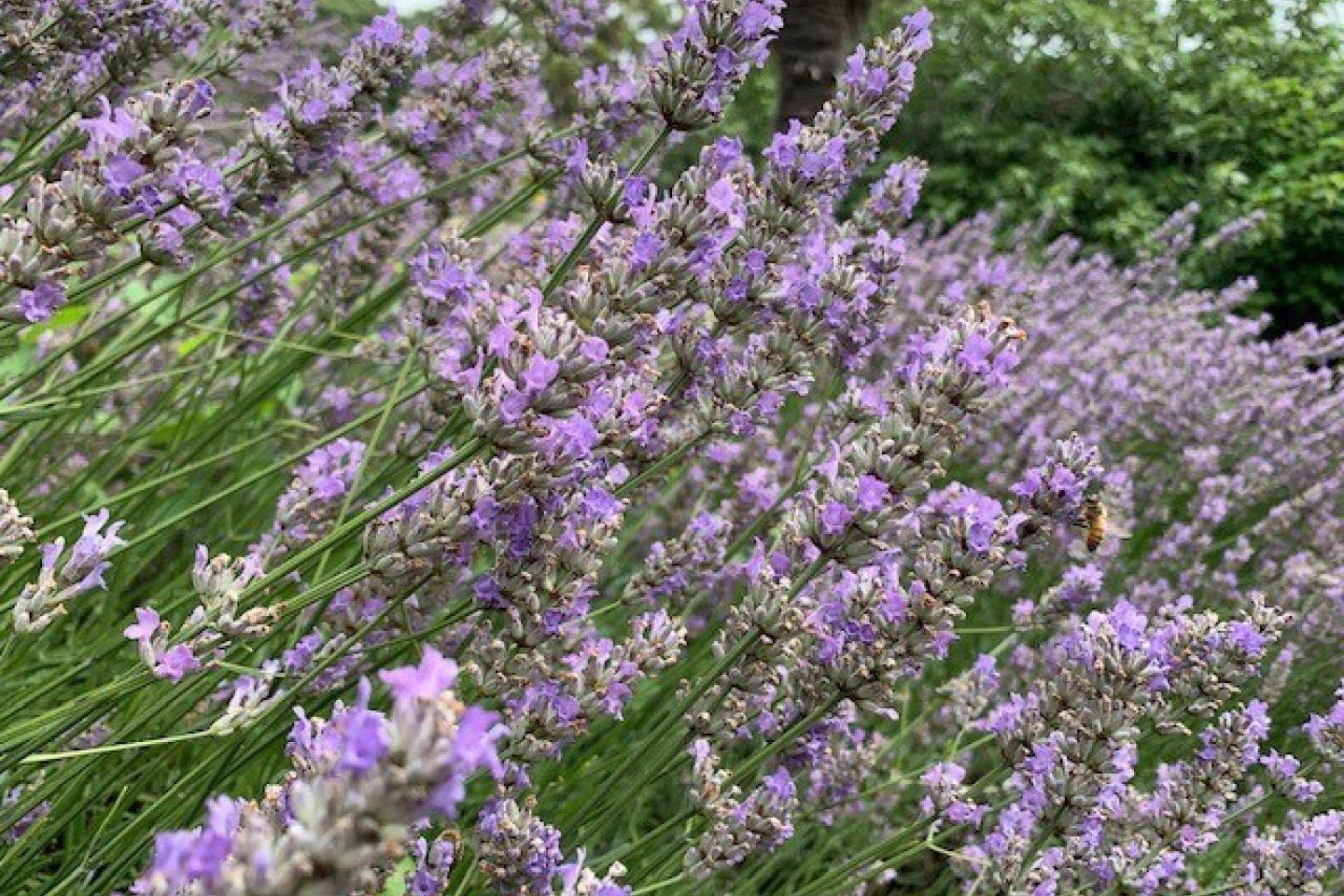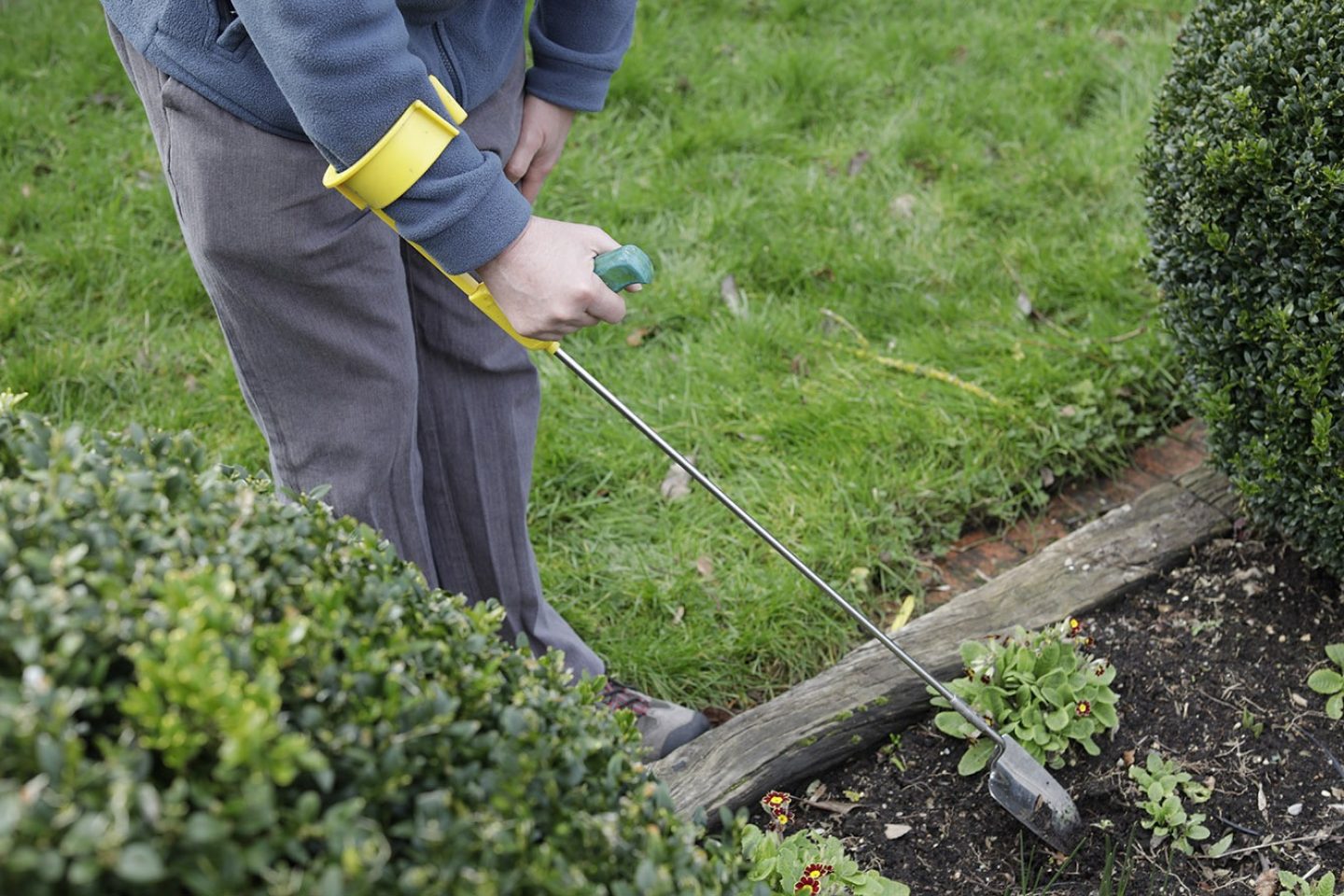
You do not necessarily have to do expensive changes or hire a landscape gardener. Sometimes a few minor changes can make a big difference.

Paths
Think about paths. They should be safe and stable. You may want to make them wider, so they are easier to use with a stick, walking frame or wheelchair.
Changes in level
Steps or a ramp can be helpful if you have changes in level in your garden. A ramp may be safer if you have any sight loss.
Find even more advice in our guide to accessible garden design.

Flower beds and borders
If you have flower beds and borders, keep them narrow. This allows you to reach them without overstretching. Around 50cm is a person’s maximum recommended reach.
No dig method
Using the ‘no dig’ garden method can make beds and borders easier to manage. The basic idea is that you don’t disturb the soil by digging. Instead, you add a really good layer of mulch and let the worms and other soil life do the rest. Find detailed advice including FAQs on Charles Dowding’s website.
Raised beds and planters

Some people prefer gardening in large, raised beds or elevated planters. These bring the soil level higher, which can make it easier to access. Read our guide to gardening in raised beds for detailed information.
You could also plant in smaller containers. These can be arranged at a table. If needed, you could get some help then moving them into their final place.
You have to be determined to keep your independence. You have to keep trying to do it for yourself.
Angela, gardener and stroke survivor
Plant choice

Growing low maintenance plants can make gardening less effort. Some plants, for example, need less water. Lavender, sedum, grasses and agapanthus are all good choices.
You could also choose dwarf varieties of fruit tree. Some never grow beyond a metre or two in height, making pruning less effort.
Ease of watering
Have water butts and standpipes placed around the garden. This will reduce how far you need to travel with a watering can. There are plenty of other ways to make watering easier to do. Read our guide to watering plants outdoors for tips.
Weeding less
Weeding can be a frequent, physical activity. Using the no dig method, or gardening in raised beds, should make weeds easier to manage. Another approach is to lay weed control fabric over beds and borders. Cut holes to grow wanted plants through. Find more tips in our guide to weeding.
Seating choices

You may prefer to garden from a seated position. You can find a range of garden stools to sit on. You could also have seating ready outside near to the area of work.
It benefits me to get out into the garden in my wheelchair and take that time for myself, to be transported from your own worries to an appreciation of leaves, flowers and trees.
Joanna, gardener, stroke survivor and author

Depending on whether you are working at ground level or at height, you may either want lightweight long-handled tools or hand tools. Read our recommendations for gardening tools and equipment after a stroke for more advice.
Easy carrying
When you garden, make it easy to move tools and equipment around. There are many varieties of garden trolley, wheeled garden caddy and carrying belts you could use.
There is always something to do in the garden, or enjoy in nature. Choose manageable activities and ones that you would like to do. Read our guide to gardening activities after a stroke for ideas.
Some tasks can be left completely. For example, a light amount of fallen leaves are good for lawns. You can leave them there to rot down instead of tidying.
Gardening again has raised my morale … the pleasure of seeing the seeds grow and actively participating is most rewarding.
Rita, gardener, stroke survivor